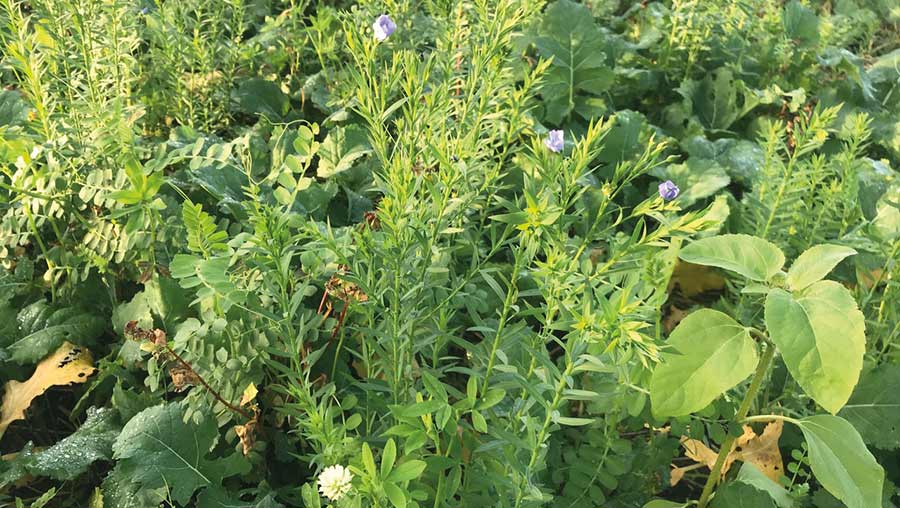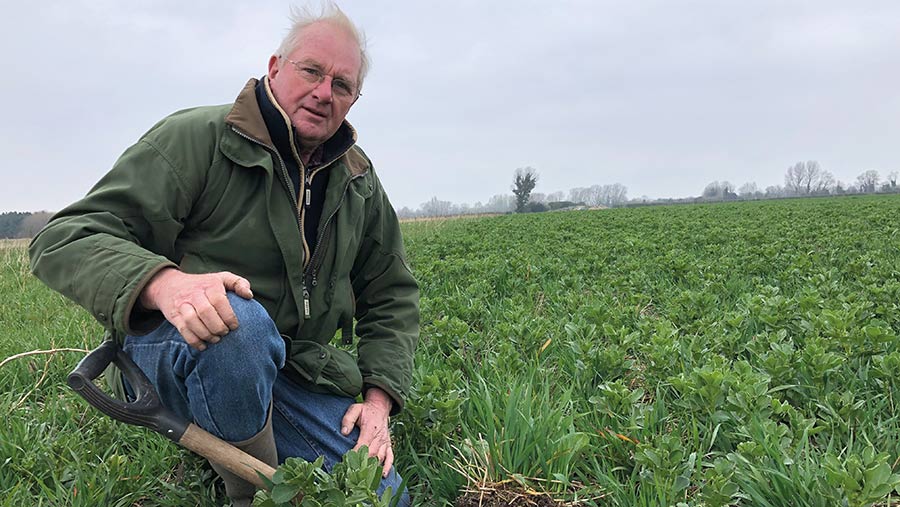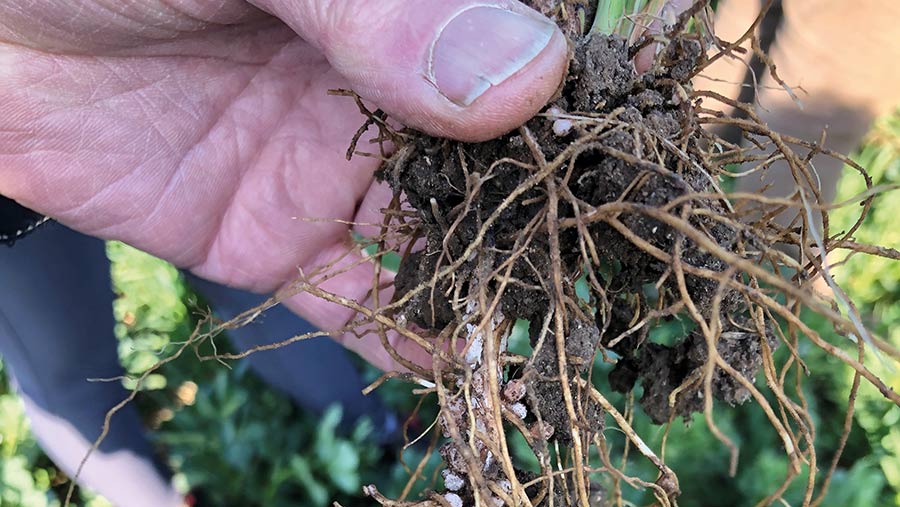How costs are falling for one regen farmer
 © David White
© David White The two big expenses on an arable farm – fuel and fertiliser – have been reduced significantly since Cambridgeshire grower David White decided to stop cultivating and move to a regenerative system.
Given the unprecedented price rises in both commodities, he is pleased that the journey he started six years ago on his 161ha arable farm at Little Wilbraham means that performance is now less reliant on energy-intensive inputs and their timely application.
See also: Beans and oats bicrop helps eliminate fertiliser on Cambs farm
Back in 2015, all cultivations at Hawk Mill Farm stopped, so that Mr White could improve soil health and make the changes that he felt were necessary to future-proof the business.
As well as going no-till, the change in direction meant introducing a diverse rotation based on spring and autumn-drilled crops and committing to 100% soil cover wherever possible. This was to support and enhance soil biology, protect soils from weather extremes and improve their function.
It also involved a complete mindset change, something that Mr White acknowledges can still be a challenge on a stockless arable farm, after years of farming conventionally.
Multispecies cover crops

David White © MAG/Emma Gillbard
At the outset, he had to get to grips with multispecies cover crops and learn how to grow them on his three different soil types, so that he could get the most from the diversity and nutrient cycling they provide.
Experimenting with six different cover crop species sown at different seed rates, Mr White found that a mix of all six species was the best approach.
He also investigated termination methods and dates, settling on an end of January destruction date target where spring crops are drilled in late March.
“As well as spraying them with glyphosate, I’ve tried flailing, rolling them in the frost and crimping,” he reports.
“These mechanical methods all help with managing the mass of vegetation, rather than killing it off.”
Cost reductions
Today, Mr White admits that he doesn’t burn much diesel and has cut right back on the use of nitrogen fertiliser.
“Having made good progress with my soils and been able to make some big cost savings, I now want to benefit from the rise in commodity prices without slipping back to making unnecessary agronomic interventions,” he explains.
He uses just 38 litres/ha of fuel and spends two machine hours/ha growing the crop on a stubble-to-stubble basis. With his soils responding well to the change in management, Mr White is ready to see costs come down further – hopefully, without impacting crop margins.
“Soils take time to improve,” he noted. “Now that I am six years into the system, organic matter levels have risen and I can make some bold decisions on inputs.
“If they don’t come off, for whatever reason, I can always put things right later on.”
Fertiliser use
Nitrogen use has already been capped on most of the combinable crops that he grows, with trials being conducted to see if he can go further and make better use of alternative sources of the nutrient.
He has also eliminated the use of all phosphorus and potassium fertilisers, stopped using seed treatments and insecticides as far as possible, largely switched to home-saved seed for all crops and continues to try out different techniques, with lots of his own and third-party trials on the farm.
Oats/pulse bi-crops, companion cropping in both oilseed rape and winter wheat, variety blends and in-field flowering strips have all been introduced, with biodiversity benefiting from habitat provision and the resilience of his system improving.
This year’s oilseed rape was established on 17 August using home-saved seed and a companion crop, but without the help of a starter fertiliser or any autumn herbicides. Just 160kg/ha of nitrogen has been applied, along with Astrokerb (aminopyralid + propyzamide) to take out the companions.
His winter wheat crops are a mixture of a Group 1 variety blend – consisting of Skyfall, Zyatt and Solstice – a crop of Gleam destined for breakfast cereal manufacturer Nestle via Camgrain and some heritage wheat.
Companion planting
Some of that wheat was planted with a companion crop of vetch, beans and winter peas, which has since been removed, to see how much N it can contribute and whether fertiliser rates can be adjusted. Two different seed rates of companions have been used, to find the optimum rate.
So far, his Group 1 blend has received 120kg/ha N in two splits, as well as a yellow rust spray. Normal practice has been to apply 240kg/ha N, although that will be reduced this year and the heritage varieties will receive much less.
In one field, a flowering Assist strip has been established for the contribution it can make to natural enemy numbers and pest control, with pitfall traps placed at 5m and 15m distances from the strip showing higher numbers of carabid and small beetles than in a conventional field.

Nodulation in beans © David White
Both spring and winter bi-crops of beans and oats are being tested on the farm. No other inputs are planned for them – the oats help to suppress the weeds that tend to otherwise occur in beans and some transfer of N from the beans to the oats seems to take place.
His previous experience with “boats” is that they tend to come to harvest at the same time and the oats never look hungry. “A spring bi-crop is the ideal – it has a shorter growing season so there are fewer weed challenges.
“Providing you can separate them after harvest, there are some advantages. The growing costs are far less than with a mono crop, last year’s crop had a better gross margin and the land equivalent ratio was 1.3.”
- David White was speaking to Farmers Weekly on a farm walk at Hawk Mill Farm, organised for Base-UK members, to encourage knowledge exchange and share group experiences.

